This post may contain affiliate links. By clicking and making a purchase through the links, I earn a small commission at no extra cost to you. See my disclaimer for more information. This and display ads allow me to keep the site up to date and give back.
As one of Europe’s most popular vacation destinations, it’s no surprise to see so many people wanting to be a digital nomad in Spain! Tropical islands, vibrant cities, and mountain escapes – there are so many amazing destinations to live and work in Spain.
In this digital nomad guide to Spain, I’m sharing the best places to live across the country where you can strike a perfect balance of work and play.
Digital nomad visa Spain
Spain is part of the Schengen Area, which means as a Canadian or American, you’re only allowed to stay 90 days within a 180-day period. So the maximum time you can stay in Spain on a regular tourist visa is three months (for EU citizens, stay as long as you like).
As of now, you can get a 90-day visa on arrival, but in 2023 you will need to apply in advance through the European Travel Information and Authorisation System. Here are the ETIAS requirements for Canadian citizens.
My strategy has always been to spend 90 days and then another 90 days outside (Bansko is a great option). But if you want to stay longer, there are a few options.
Spain has a non-working (non-lucrative) residence visa, which is a visa to reside in Spain without carrying out any work or professional activity. You must have sufficient and guaranteed means to live on.
Spain also announced earlier this year that they are creating a digital nomad visa, but the details have not been finalized yet.
Best digital nomad destinations in Spain
Tenerife

If you’re looking for warmth and sunshine, head to the Canary Islands. Located off the coast of northern Africa, the Canary Islands offer year-round sunshine and stunning landscapes.
Tenerife, the largest of the islands, has become a very popular spot with expats and nomads in Spain. I spent two months living in Tenerife as a digital nomad in the winter of 2022.
Why live in Tenerife? For the outdoors! It’s a premiere surf destination, you can hike up Spain’s highest peak, dive underwater with sea turtles, spot whales, go windsurfing… there are so many fun things to do in Tenerife, and then, of course, there are the beautiful beaches.
The north and south of the island are an hour’s drive apart yet offer a completely different experience. If you want to party and spend your days playing beach volleyball, stick south to an area like Los Cristianos or Playa Las Americas. It’s pretty touristy and loud at night, but you’ll never be bored.
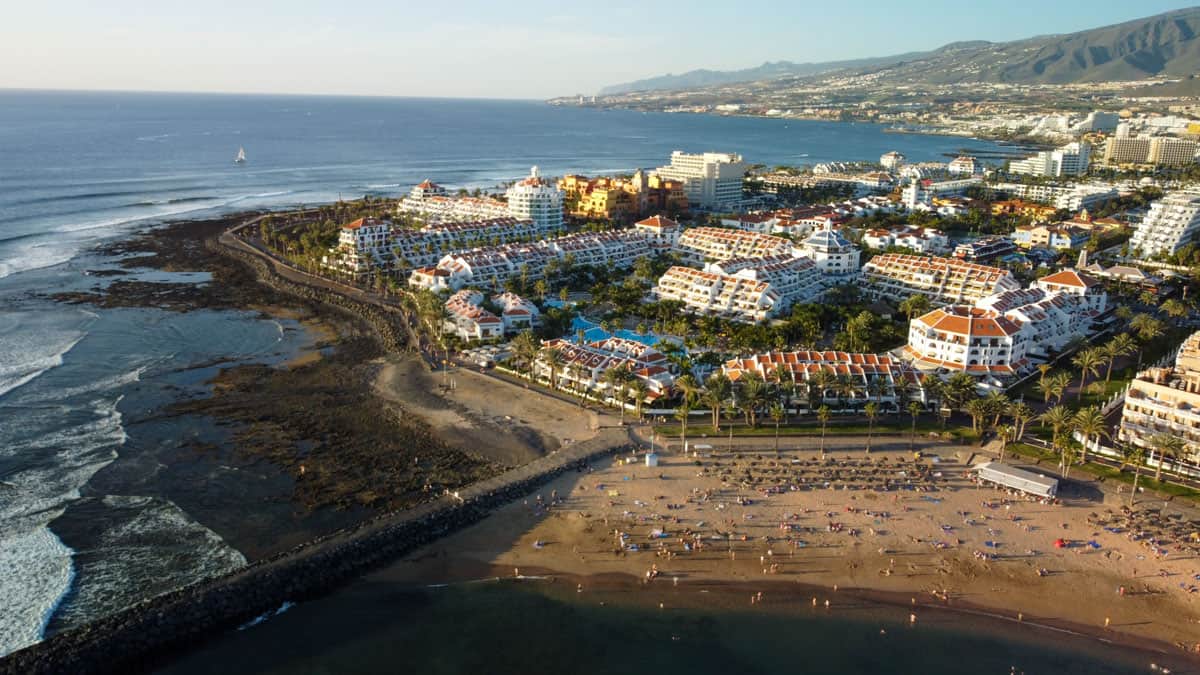
If you prefer a quieter, more authentic Spanish experience, head north to the capital city of Santa Cruz. Above it is Anaga rural park, one of the most beautiful places to go hiking on the island.
The cost of living in Tenerife varies if you have a car or your own place, but I got by on less than 2000 euros a month, splitting a shared apartment in Playa Las Americas with an active social life.
The cafe scene still has room for improvement, but I enjoyed working at Tierra Cafe and Pistacho Coffee Brunch, which both have great vegetarian options.
Colivings are plentiful throughout the island, and the Zen Den coworking space is an excellent place to get some work done if you’re living in the south.
Tenerife Remote Workers and Digital Nomads is a great Facebook group to join for more info on the island.
Gran Canaria
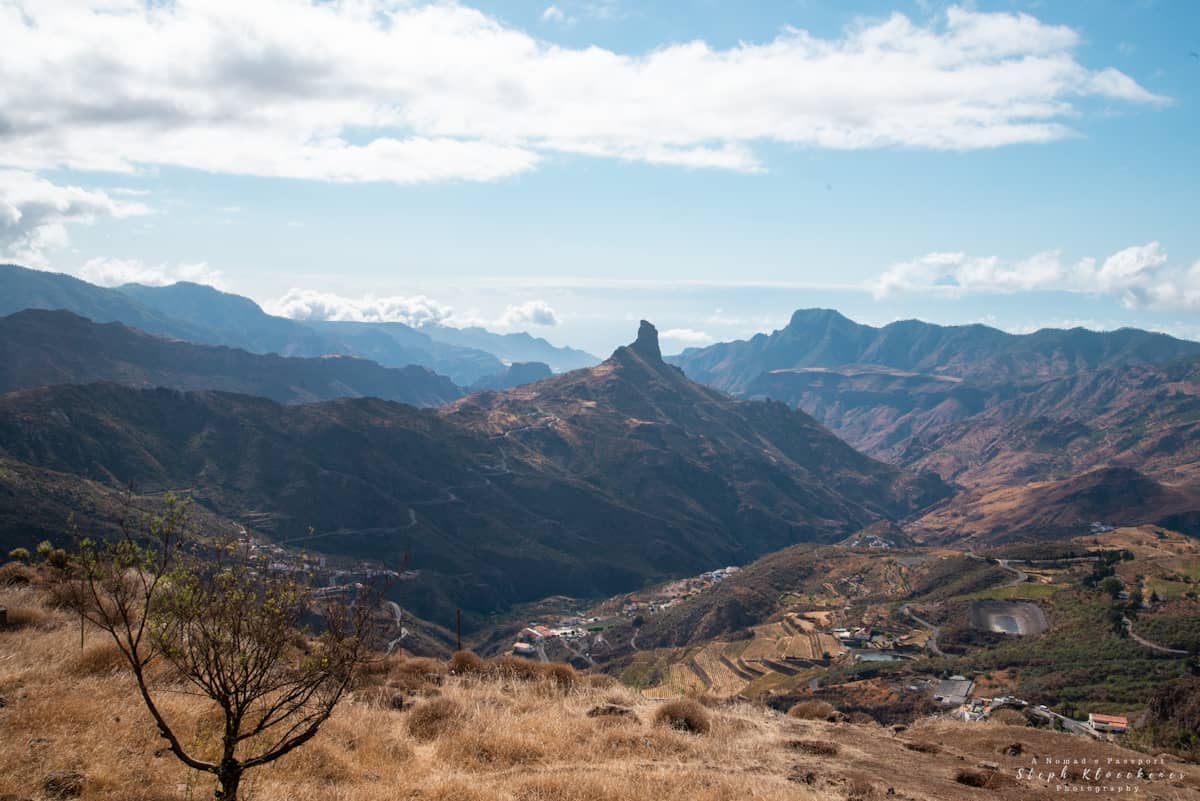
By Steph of A Nomad’s Passport
Las Palmas and the entire island of Gran Canaria are among the best places in Spain for digital nomads. After all, it has everything from fantastic beaches to an active digital nomad community. And thanks to its climate, it is the ideal place for digital nomads that are looking for the perfect place to spend the winter months.
There are plenty of adventurous things to do in Gran Canaria that are ideal for outdoor lovers. After all, there are many hiking routes that span the entire island, as well as fantastic scuba diving spots. And of course, the city of Las Palmas itself also offers a lot ranging from museums, the historic city center, and Playa de las Canteras.
If you want to meet up with fellow digital nomads, you can either meet them in person at one of the many coworking spots like ‘The House’ in the Triana neighbourhood, or simply join the Digital Nomad Facebook groups, where all kinds of meet-ups and activities are prequently shared.
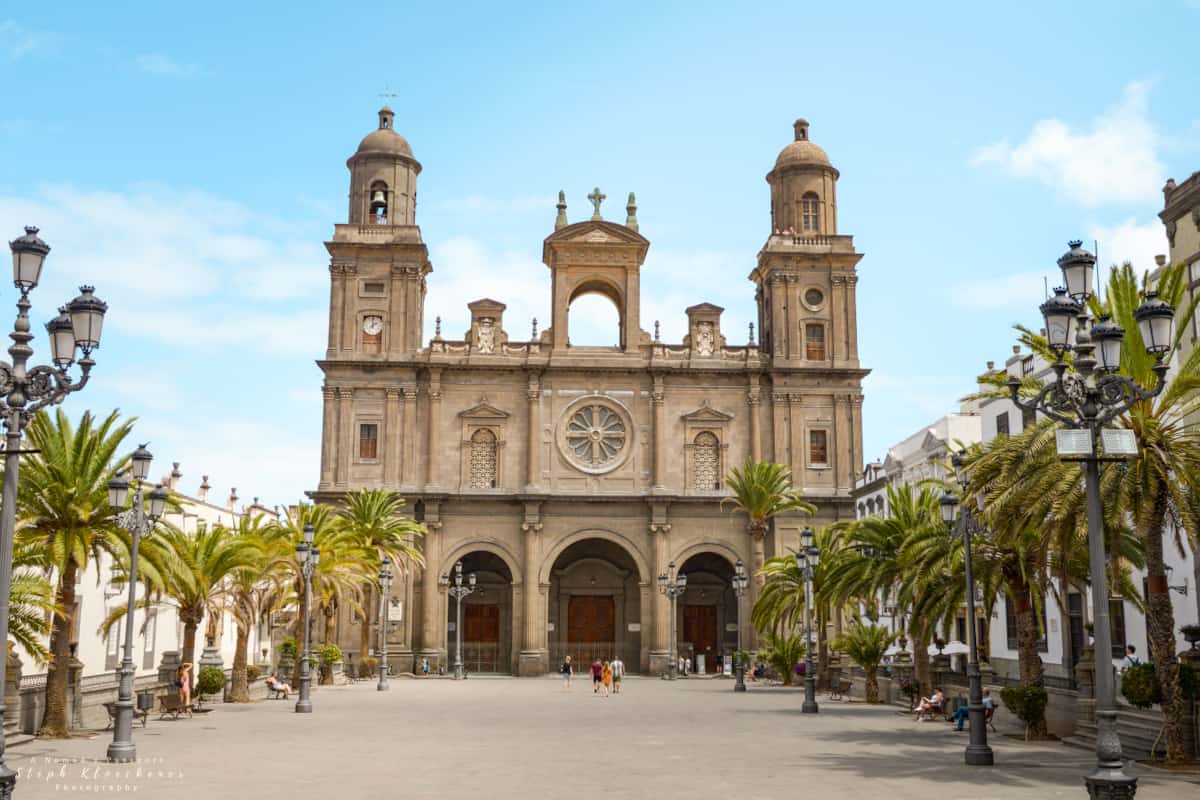
Every single digital nomad working from Gran Canaria should rent a car for a day or two and visit some of the stunning viewpoints of the island. Pico de las Nieves and Mirador del Balcon are among the best of them. And those that do not mind hiking in the dark, should also watch the sunset from Roque Nublo.
Your total expenses per month will largely depend on where in Gran Canaria you are staying and what kind of accommodation you are looking for. Las Palmas itself is more expensive, so you should expect to spend between 1.000€ and 1.500€ on living expenses per month. However, it is also possible to spend significantly less if you want to take a break from city life by working from one of the smaller villages in the center of the island.
Benidorm
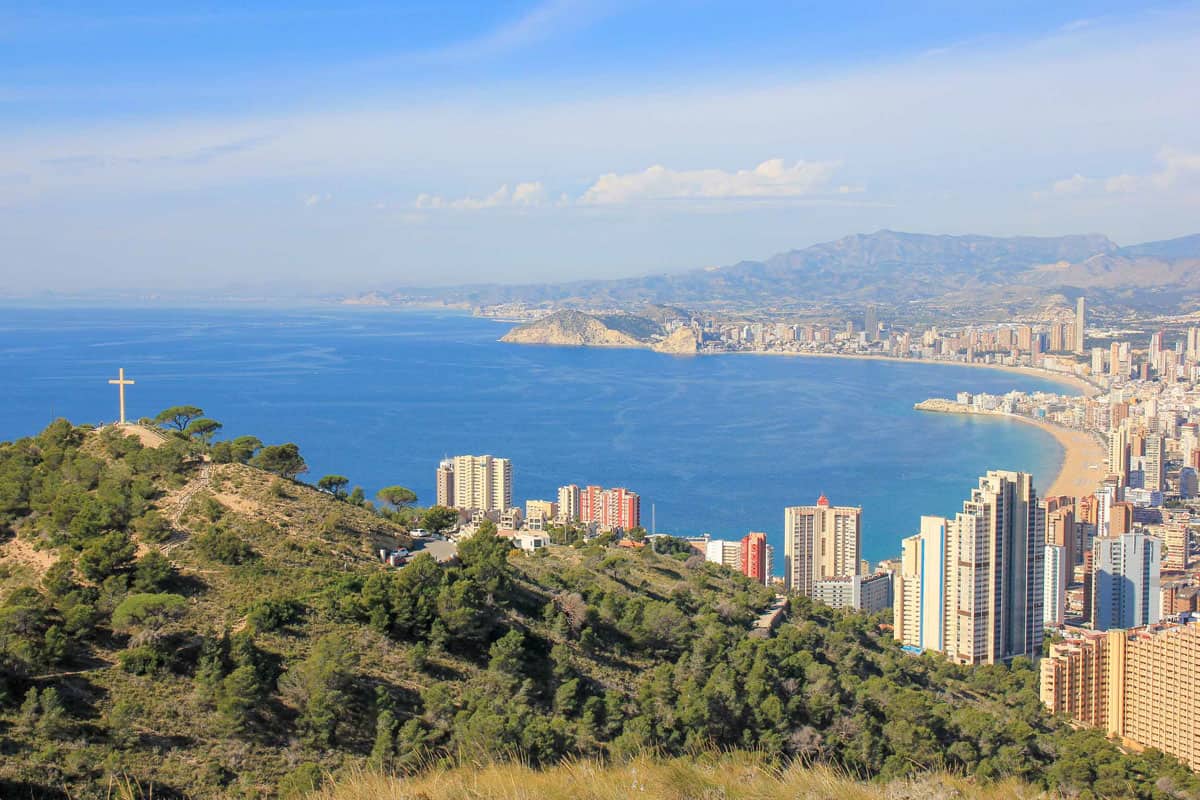
By Martina of Places of Juma
Benidorm is a spectacular coastal town in Spain not only for vacationers but also for digital nomads and expats. Especially in winter, as from October to April, there are fewer tourists, the prices are down, and you can still enjoy beautiful weather. Also, apartments in Benidorm are very cheap at this time. You can rent a flat from 450 Euros per month, maybe 700 Euros if it is directly on the beach.
Benidorm is in the heart of Costa Blanca, where you will find some outstanding beaches. From here, you have the opportunity to discover many other places, such as Altea, Villajoyosa, and Calpe. In addition, the Sierra Helada Natural Park, right next to the city, is a beautiful place to go hiking.
Expat life in Benidorm can be really exciting. The city of Benidorm is known as the Manhattan of Spain. Many skyscrapers rise along the coast, creating an urban feel. There is always something going on here, so young expats will feel at home. There are many possibilities for going out in the evening, enjoying a delicious meal, or celebrating life.
In cafes and bars, you will meet other digital nomads and other foreigners, or there are coworking spaces such as the Coworking Tourist-Lab.
Public transport and train access, as well as the proximity to Alicante Elche International Airport, gives you excellent travel options around the country.
Fuengirola
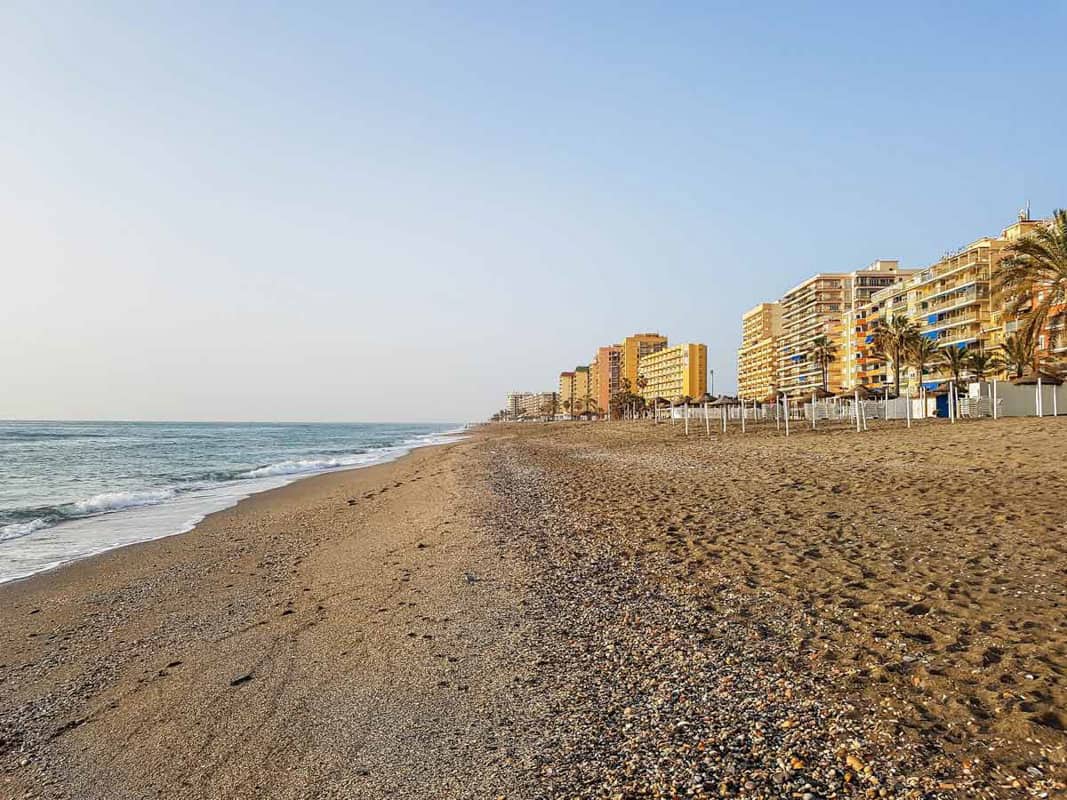
By Joanna of Andalucia In My Pocket
Fuengirola is a great place to base yourself as a digital nomad in Spain. I lived here for two years and found it to be a great destination to enjoy the winter sun, as well as the Spanish lifestyle.
Fuengirola is a town on Costa del Sol, different from the other resorts, which are most popular during the peak summer times. In Fuengirola, you can meet expats, as well as plenty of locals.
There are a few communities in town celebrated every year through the Festa International de los Pueblos, where everyone celebrates diversity through a four-day festival.
Because it is a town, Fuengirola is much cheaper than other places on Costa del Sol. I was living in a two-bedroom apartment with a first-line view of Mijas Golf Course, two balconies, a rooftop terrace, storage, an underground parking space, and three pools in the apartment complex paying 700 euros a month. You can definitely find cheaper for a location without a view.
The internet in Fuengirola is fibre, but make sure you check the location where you are moving to before, as there is only satellite internet on the outskirts. My first home had satellite internet and was very slow – I moved very soon to a more central location with fibre.
I found a great international community by going to the gym – Syngergym – the largest in town.
The town is full of great restaurants, not just Spanish but also other international cuisines. Fuengirola is a vibrant town with plenty of events taking place all the time. There are also plenty of things to do in Fuengirola, from relaxing on the beach to visiting the Medieval Sohail castle, from going on a cruise to spot dolphins to checking out the Bioparc.
Malaga Digital Nomad

By Cristina of My Little World of Travelling
Malaga has become a popular destination for digital nomads. With an average of 320 days of sun, plenty of activities to do in the city and its surroundings, and its incredible expat community make Malaga an attractive choice for remote workers.
In addition to all of these advantages of living in Malaga, another good reason to choose it as your digital nomad base is the affordable cost of living.
The rent in Malaga is about 600 euros for a one to two-bedroom apartment per month, but you can find cheaper options if you look for accommodation outside the city center. Regarding food, you can spend between 150 and 200 euros per month.
If you rent accommodation in Malaga city center, you won’t need transport, but if you do, you can get a monthly bus ticket for 40 euros.
While being an affordable destination to live in, Malaga has many incredible things to do. From cultural activities like visiting the Alcazaba palace, its cathedral, and Picasso Museum to culinary experiences and outdoor activities like hiking.
Once you know the city well, you can also go on fantastic day trips to charming whitewashed villages, Andalusian cities, or even Gibraltar.
Last but not least, making friends in Malaga isn’t very difficult as locals are friendly, and there is a big community of expats and digital nomads. You can find many events to meet people on websites like Meet Up and Facebook groups.
If you are looking for a coffee shop to work from, El Último Mono Juice & Coffee is an excellent choice.
Barcelona digital nomad
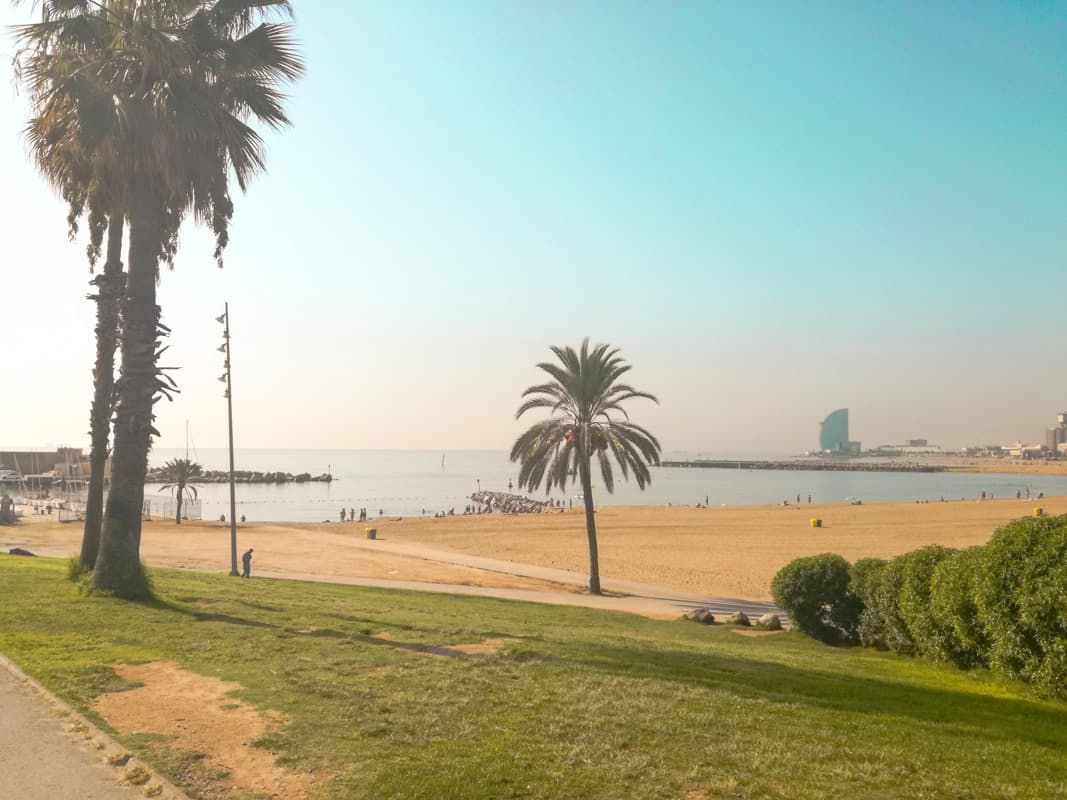
By Vicki of Vickiviaja
Barcelona is an excellent choice if you’re a digital nomad looking to go to Spain. As a beach and city destination mix, Barcelona offers a perfect blend of what many Digital Nomads crave when moving abroad to Spain.
Barcelona is home to plenty of expats and digital nomads from all over the world, so it’s perfectly set up for their needs. With dozens of cute cafes with internet access, coworkings, networking- and after-work activities, everyone can find what they’re looking for. Plus, there are constantly new events to learn more and connect with other digital nomads.
The big plus that Barcelona offers its residents is, of course, the beach. Other major Spanish cities, such as Seville and Madrid, lack this. After all, there is nothing better than relaxing on the beach after a long day of work.
Compared to many other Spanish destinations, Barcelona is, unfortunately, rather pricey. Rents are currently around 400-500 euros a month for a room in a shared apartment. Don’t let the price discourage you, though, because Barcelona has so much to offer in return.
Dozens of museums, cultural institutions, activities, clubs, and events are waiting for your visit. In addition, the prices are not that high compared to other popular European international metropolises such as Paris, London, or Berlin.
So, to sum it up, Barcelona is a great place to get started as a digital nomad. You will definitely be able to attend many great events, find fantastic places to work and meet many inspiring people.
This Facebook group is a great place to meet other nomads
Madrid Spain digital nomad
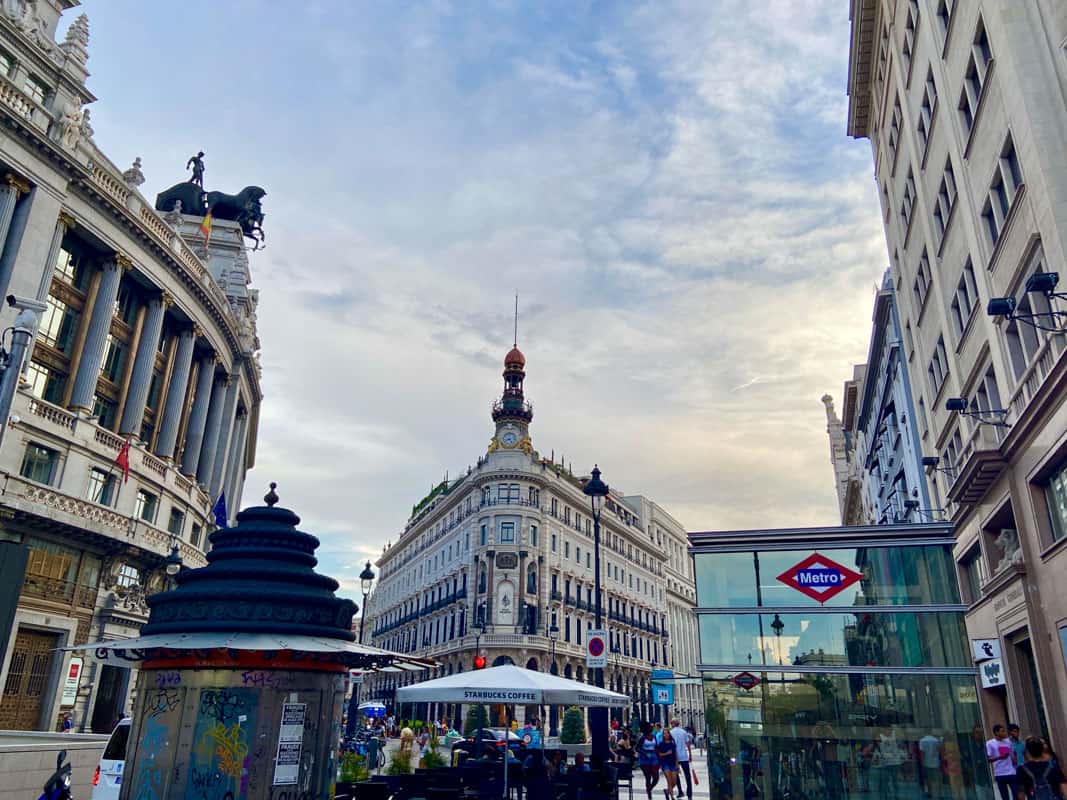
By Scott Bihorel of Colombia and Beyond
While the landlocked capital is sometimes passed over in favor of the beaches of Barcelona, make no mistake about it. Madrid is a beautiful and lively city that is a fantastic destination for digital nomads.
It has a cost of living slightly lower than Barcelona’s and far below that of Paris or London. A single person can get by on €1500 per month or less. There are numerous colivings, single rooms, and 1-bedroom apartments or studios for rent in the €600-€800 range.
Homelike makes finding the perfect apartment in Madrid easy. They offer a variety of furnished apartments in desirable neighborhoods that come with everything you need, including high-speed internet. Some are even pet-friendly! With everything set up, you can start exploring or working right away.
Like any city, the most economical options are located farther away from the city center. Fortunately, public transport options are so plentiful (and affordable) that it’s no trouble getting there whenever you want to.
There’s no shortage of fun and exciting things to do and see in the city. There are world-class museums, beautifully extravagant churches, and lush urban parks.
You can have a coffee at an outdoor cafe in the Plaza Mayor, enjoy tapas and wine at the famous cuevas (caves) surrounding it, or dine at the nearby Sobrino de Botín, the world’s oldest restaurant.
Don’t speak Spanish? Not to worry. You can get by in the capital with just English, although learning some basic phrases will go a long way. Why not start with this article on 20+ ways to say “nice to meet you” in Spanish?
You can also tap into the local digital nomad community for support. It’s quite strong here, with very active Meetup and Facebook groups. There are also quite a few coworking spaces. Check out Nomad Coworking, The Shed CoWorking, or Cink Coworking.
Segovia

By Moumita & Sankha from Chasing the Long Road
Located in the Castille and Leon regions, Segovia is one of the most historic cities in Spain. It lies almost 100 km northwest of Madrid, the capital city of Spain.
With a very affordable cost of living and easy access from Madrid, Segovia is a great place to live for digital nomads. The city is not too big but is very welcoming, with a friendly, laid-back atmosphere. There are plenty of amazing historical and cultural things to do in Segovia.
This city is steeped in more than two thousand years of history. One of the most famous attractions of Segovia is the Roman Aqueduct – an engineering marvel with two tiers of arches built around the mid of first century.
Segovia is also home to a fairytale fortress, The Alcazar, which is believed to be one of the inspirations for Walt Disney’s Cinderella Castle. Segovia Cathedral, the last Gothic cathedral of Spain, lies in the historic heart of the city. The Old city center of Segovia is a UNESCO World Heritage site.
Not just thousands of years of rich history and grand architecture, this city has its claim to fame for culinary treats too. The famous Spanish dish, Cochinillo or Suckling Pig originated in Segovia. You will never get bored living in this city.
Getting around this city is very convenient. The old city center is easily walkable. You will find great Wifi connections in most of the cafes in Segovia. La Flor de America is a budget-friendly cafe for digital nomads.
Seville
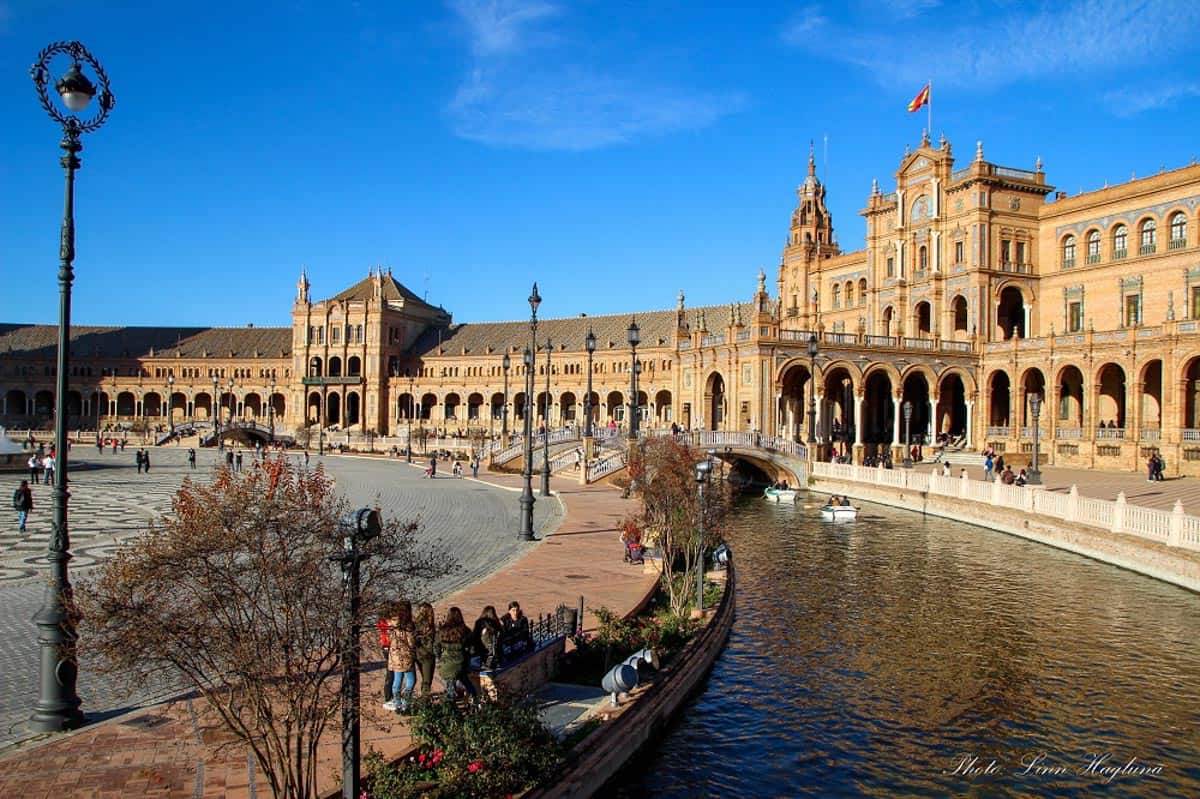
Contributed by Linn Haglund of Amused by Andalucia
Seville is one of the most staggering cities in Spain and makes for a wonderful digital nomad destination.
There is a world of things to do in Seville. Even after you have seen the Real Alcazar, La Giralda, and the cathedral, climbed the Metropol Parasol, and spent endless hours people-watching in Plaza de España, you will still find enough activities to keep you busy on your time off through months or even years.
Compared to other cities in this part of the country, Seville has kept its authenticity, and you are likely to find some local friends on top of the nomad community. That is if you try to learn some Spanish and show interest in the rich culture of which the locals are so incredibly proud of.
Dance Sevillanas into the late night hours at the Feria de Abril and search for the bars hidden in secret squares to grab a beer. The international community is also very warming in Seville with digital nomads and expats that ended up staying after falling in love with the city.
If you have a dog or just love having animals around, the Thinking Company Coworking Sevilla is reasonably rated, and you can bring your dog!
Depending on the neighborhood you choose to live in, you can get a place between 450 and 700 Euros a month for rent.
Santiago de Compostela
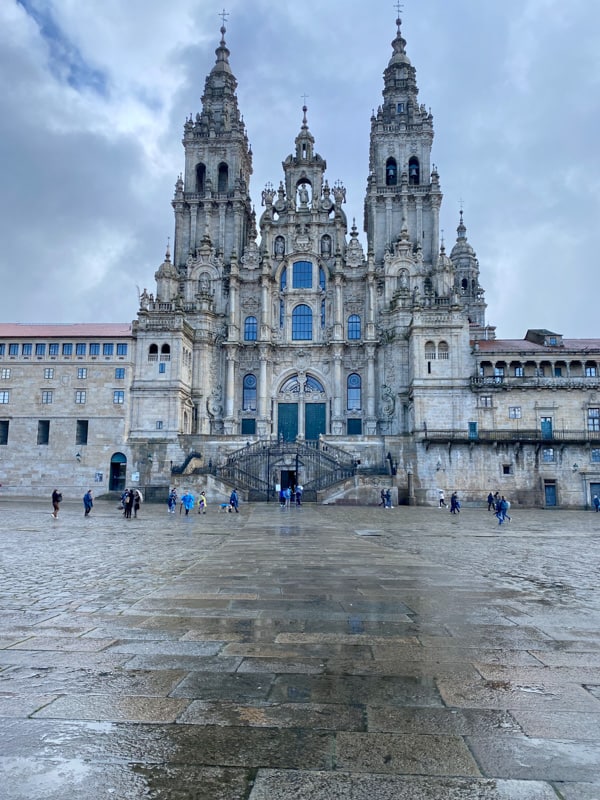
By Christine Rogador of Guide To Day Trips
Galicia’s capital, Santiago de Compostela, is one of the Catholic Church’s holiest sites. St. James, one of Christ’s twelve apostles, is said to be buried there. Santiago de Compostela, however, is known for more than only its religious and cultural significance; it is also quickly becoming a popular destination for digital nomads.
This city in Spain’s northwest is an excellent location for remote workers thanks to its low crime rate, friendly locals, variety of affordable lodging options, and high-quality internet access.
You may comfortably stay in Galicia’s capital city without spending much. For less than 1200 euros per month, you already get to stay in a modest apartment, cover grocery and dining out expenses, health insurance, gym, a monthly pass (bus), a 10GB prepaid plan, and home wifi.
Santiago de Compostela has also rapidly expanded its number of coworking spaces. They have flexible areas, are well-connected, and have a conducive ambiance – all at an affordable price. Some of the best coworking spaces in Santiago de Compostela are Doutroxeito Coworking, Campus Stellae Coworking, and Santiago Social.
You can always go to Santiago de Compostela’s historic center when you need a break from work. It is small and easy to navigate on your own. Visit the stunning Cathedral of Santiago de Compostela, famous not just for its spectacular architecture but also for what is believed to be St. James’ tomb under the main altar.
Close to the cathedral are other must-see structures, such as the Monasteries of San Martin Pinario and San Paio de Antealtares, and the Convento de San Francisco de Santiago, now a 4-star hotel and restaurant.
The Museo do Pobo Galego (Museum of the Galician People) at the Convento de Santo Domingo de Bonaval is a great place to learn about Galician history and culture.
For a day at the beach, visit the nearby coastal towns of Rias Baixas and Finisterre, and Muxia. There’s also the Ribeira Sacra for breathtaking gorge scenery and terraced vineyards.
Tarifa, Andalucía
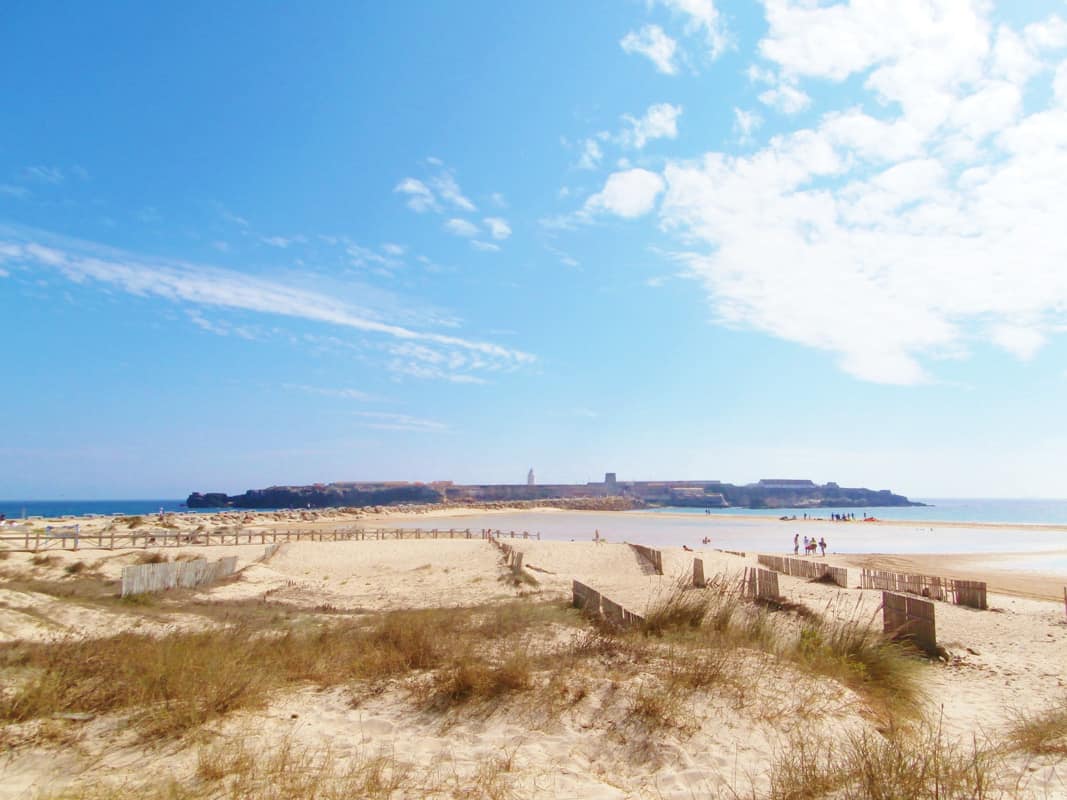
Contributed by Iris Veldwijk of Mind of a Hitchhiker
At the southernmost point of Europe, where the Mediterranean meets the Atlantic, is an adorable village that has become quite the remote working hub. Meet Tarifa in Spain’s beautiful and friendly Andalucía region.
For digital nomads, Tarifa has been a destination for nearly a decade, especially among German-speaking entrepreneurs. Many businesses know what remote working is and cater to these needs by having good, work-friendly tables and organizing coworking sessions.
The community used to be centered around La Cocotera Hostel and Coworking, and it’s still a good place to start, along with this Facebook group.
Tarifa is a popular kitesurfing destination, particularly in the spring and autumn shoulder seasons when the wind is good. Other activities in the area are hiking east and west of the peninsula, visiting the dunes and beach of Bolonia, admiring the Roman ruins, and making day trips to Gibraltar and Tangier. That last one is particularly interesting if you quickly need to leave Schengen.
If you find yourself here in September, make sure to attend the Feria de Tarifa, which features a horse parade through the Puerta de Jerez.
Accommodation prices in Tarifa are incredibly seasonal. July till September is the most expensive time because summer vacation tourists also pass through town. After that time, prices drop significantly, and with some pre-planning, you can strike a bargain.
If you’re a couple traveling in October, expect to pay about €45 per night for an apartment with all the bells and whistles that make it comfortable. Grocery prices are similar to the rest of mainland Spain, and there are vegetarian/vegan/gluten-free restaurants and cafés. The nearest major airport is Málaga.
—
There you have it, nine diverse destinations to inspire your move to Spain! Where would you love to live?
Thinking about becoming a digital nomad? Check out these posts!
- 10 countries in Europe offering digital nomad visas
- The best backpacks for digital nomads
- The best health insurance for digital nomads
- Cheapest places for digital nomads
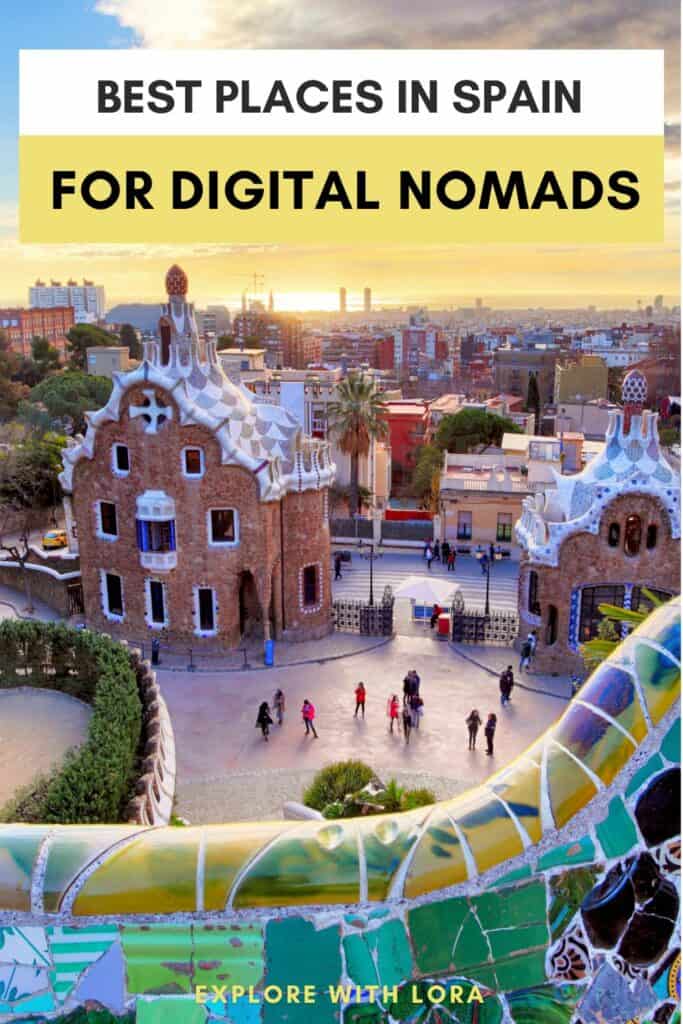

Leave a comment